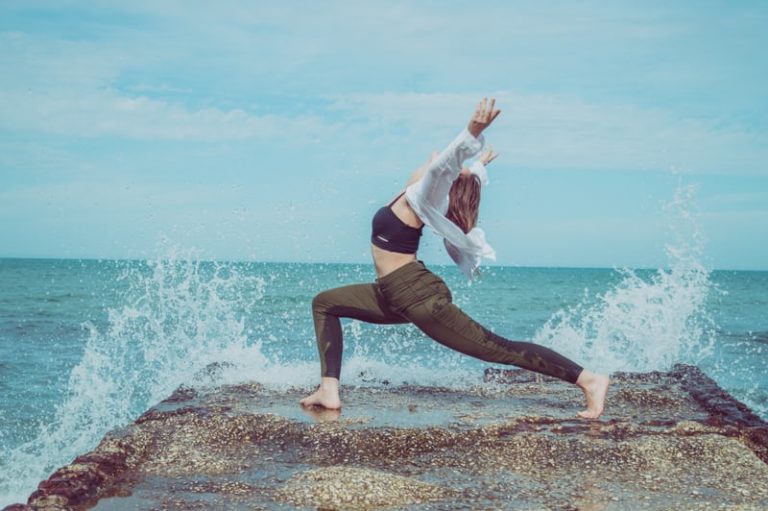There are many styles of yoga to choose from, but we tend to fall into two camps: building flexibility or gaining more strength. We’re not going to tell you which is better, but we’ll tell you what styles work best for you to build strength and to feel strong. We’ll also tell you about benefits of these different styles.
What’s the Distinction Between Vinyasa Yoga and Ashtanga Yoga?

The Ashtanga and Vinyasa styles of yoga have several similarities, but they are, in fact, distinct styles of yoga with some clear differences. It’s an excellent idea to find out what to expect from each yoga style before choosing your yoga classes. The Ashtanga style of yoga is designed for advanced students who are fit and lead an active lifestyle. The Vinyasa style of yoga is best for students who wish to build up strength and flexibility while enjoying a creative sequence of postures.
Both styles of yoga have similarities and some differences, but the difference between Ashtanga yoga and Vinyasa Yoga is in how we approach yoga in daily life. Both the Ashtanga and Vinyasa styles are beneficial, and this article will help you understand if an Ashtanga Yoga class is right for you.
Similarities between Vinyasa and Ashtanga
Both Ashtanga and Vinyasa yoga link movements to breath, flowing between poses. Because of this, they both offer a great workout, as you’ll be moving almost continuously throughout the class. You may find many common combinations of asanas—for example, both styles usually incorporate the well-known Sun Salutation Vinyasa combinations—but you’ll discover poses are integrated differently during the course of the class. Each style is breath-centered, but their sequencing is quite different.
Vinyasa Yoga vs. Ashtanga Yoga
Ashtanga Yoga promotes a set series of asanas, or poses, that students follow the same way each and every time, holding every pose for one to five breaths. There are three distinct and separate sets of poses in this style of yoga, each with a distinct focus, and as the class advances the yoga postures and transitions become more difficult and challenging. The primary series is focused on forward bending yoga asanas, the secondary series focuses on back bending yoga asanas, and the advanced series focuses on arm balance poses. In traditional Ashtanga classes, students do not use any props or music. The classes are predictable enough that some studios offer classes where students move through the Ashtanga series without teacher-led instructions. These classes, called Mysore style, allow the students to move at their own pace with their breath while the teacher walks around the room and offers individual instructions and adjustments as needed.
In contrast, Vinyasa yoga classes (sometimes called Flow or Power Yoga) use differing sequences of poses determined by the instructor to match the student’s abilities and the class’s intention or theme for the day. As students progress through the poses during class, there is frequently a pose near the middle or end of the class determined as the zenith pose in terms of challenge, depth, complexity, and difficulty level. The rest of the workout will then quiet down, with more seated poses, more stretching and an opportunity to recover. Vinyasa classes will frequently incorporate a music playlist and the use of props, like straps and yoga blocks or bricks. Adjustments and modifications are usually offered if students require them. However, because there isn’t a lot of talking in detail about the poses, it is a good idea to have some familiarity with yoga before you begin Vinyasa classes. For yogis, who prefer a more varied class experience, Vinyasa is an excellent choice.
Physical Benefits of Vinyasa Yoga

Benefits of Ashtanga Yoga are also vast and varied. It is extremely energizing and makes one feel physically rejuvenated. It keeps one in good physical condition. Yoga also provides better digestion, raises immunity and improves immunity to illness. The stretching itself also helps boost overall relaxation level and can give one a better post workout recovery. For the over 40 years, the studies are beginning to bear out the benefits of stretching along with regular exercise. Scientific evidence also suggests that regular yoga routines can even help improve your memory in general. The benefits of stretching are so widespread that it is expected that people worldwide will be going to the yoga mat in the future, without even considering the current fashion.
Physical Benefits of Vinyasa Yoga
The Physical Benefits of Vinyasa Yoga are vast. Yoga moves through a series of spinal flexions and extension and this provides the Strength and flexibility necessary for performing athletic movements and working up towards Spinal Flexibility. The brain functions best when the spinal column is neutral and in that state, the body should be able to flex and extend at a tremendous range of motion, not just the horizontal, but also the vertical. There is a physiological response in the body to exercise when the percentage of the blood from the lungs to the body is increased. This increase in blood flow is expressed in the form of a very important enzyme called “transport factor.” This enzyme regulates the blood flow in the body in a way that helps the body to function and feel better.
Tips for new students
Students interested in starting these classes may want to look for a less vigorous Flow class first in order to ease into the flowing style of Vinyasa yoga. This way, you can become familiar with the poses and learn how to move fluidly with your breath but at a slower and gentler pace. Many yoga studios offer Vinyasa classes and less challenging Flow classes so you can discover how linking your movements with your breath can feel transformative, no matter what style of yoga you practice.


0 Comments